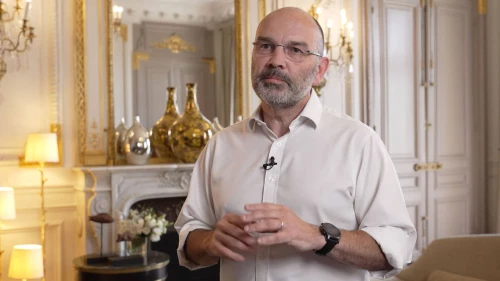It’s often said that to lead is to choose. Yet, we often find that CEOs and other senior executives need help prioritizing the initiatives that will help a company transform.
For example, a major retailer needed to transform its cost base. We discovered that poor prioritization meant more than 100 initiatives were underway. Most projects were too small to make any meaningful difference. Others existed only on a spreadsheet; no resources had been allocated.
A failure to prioritize is a failure of the organization. Senior executives must recognize that and seize the lead, championing an organization-level response for change. Then, they should ensure that all managers—starting with themselves—become effective at choosing.
Why Prioritizing Is Difficult
Prioritizing transformation initiatives requires CEOs and senior executives to determine what needs to be done to achieve the company ’ s goals, when it needs to be done, and, just as important, what doesn’t need to be done. Most executives who struggle to prioritize initiatives for their company face one or more of the following eight challenges.
Wanting to Do It All. A bias for action is good, but some company cultures encourage action to an extreme. The prevailing thinking is that doing more will accelerate change. As a result, when presented with a list of initiatives, some executives find it hard to choose—they want to do them all. In reality, though, failing to prioritize often slows change to a crawl.
Failing to prioritize often slows change to a crawl.
Weeding Out Conflicting or Overlapping Projects. Oftentimes, various initiatives that are underway are at odds with one another or duplicates. Because executives have trouble identifying those projects, they find it difficult to prioritize initiatives. Unfortunately, not making choices can promote a vicious circle of complexity. As projects proliferate, it becomes harder to identify those that conflict or overlap.
Operating with a Silo Mentality. Some senior executives optimize their decisions for their own function, rather than work across the organization with their counterparts. This misstep not only makes it difficult to prioritize initiatives for the company as a whole but also creates suboptimal solutions because they don’t consider knock-on or second-order effects.
Doing a Job Made Too Difficult. During the planning stage of a transformation, some organizations demand super-precise data about initiatives’ projected outcomes. That requirement can hamper executives’ ability to quickly eliminate projects that are too small to matter.
Perceiving Pressure to Follow This Year’s Trend. Every industry sector has a hot trend. The pressure to pursue the latest trend can hinder executives’ ability to properly assess projects and choose the ones that fulfill business needs or contribute to achieving strategic goals.
The pressure to pursue the latest trend can hinder executives’ ability to choose projects that fulfill business needs.
Feeling Compelled to Pursue Previous Trends. And what about the projects that were trendy in previous years? Because of sunk costs, some senior executives find it difficult to terminate projects—even when the original rationale has changed and the project will no longer deliver the impact that was envisaged.
Skipping the Basics. Some senior executives attempt next-level projects without having the basics already in place. For example, a company may automate or digitize an ineffective or inefficient process. It is like trying to build a castle on sand.
Ignoring the Loudest Voice. Seasoned managers often try to protect their favorite projects long after they should have been canceled to free up resources for other, more valuable initiatives. Given the long tenure of these managers, senior executives often give their views undue weight, rather than thinking about the organization’s strategic goals.
The Deeper Problem
The ability to prioritize, like any skill, improves through use. Unfortunately, in some companies, that skill has been underused during the past few years. Pandemic-related activities went straight to the top of the priority list, and long-term projects were put on hold.
Now, however, many companies are focusing on a transformation amid accelerating digitization and the pressures of the global economic slowdown. They are building large, cross-functional programs in order to create value—programs to improve the customer experience, for example, to make processes more efficient, or even to rethink the business model . But without effective prioritization, companies often create bottlenecks and fail to focus employees on the most important projects. Stalling the most critical initiatives can be the result.
How to Get It Right
Prioritizing is essential to the success of transformation projects. It increases the likelihood that a company will execute the necessary changes and create value. Senior executives can substantially enhance their skills in three ways.
Make prioritizing a conscious process and connect it to the company’s strategy. In times of significant change, it’s tempting to make a list that includes every project and begin executing them. But executives should build a prioritization stage into the transformation process from the beginning—a stage where they consciously evaluate and choose projects. Throughout the prioritization stage, the key question that needs to be asked is this: Does the initiative help execute the business strategy or get the organization closer to its goals? Without a prioritization stage, executives often fail to assign resources to critical tasks, causing the transformation to stumble.
Set priorities using the T-shirt-sizing approach. Casual clothing, such as T-shirts, is sold in small, medium, and large sizes, in part because this makes it simpler for customers to choose. Apply the same thinking to prioritizing. Make it simple to choose initiatives by using broad, simple categories—such as financial impact, time to value, and complexity—to analyze critical data and metrics. This approach provides enough precision to have the clarity that’s needed to quickly weed out projects that don’t support the company’s strategy. For the remaining initiatives, making decisions will be more nuanced. Executives should analyze a project’s cost versus its impact, for instance, or its cost versus its time to value.
Implement the plan. When the priorities become clear, the analysis stops, a plan is created, and it is time to act. Discipline and authentic leadership are vital; the organization must live by the new priorities. Senior leaders who consistently make the tough but necessary choices create a role model that empowers other managers.
Subscribe to our Business Transformation E-Alert.
For many CEOs and senior executives, prioritizing is hard. It also seems counterintuitive that by choosing fewer initiatives, they can create more value. However, successful transformations depend on the ability of all managers to set priorities, manage scarce resources, and give clear direction to their organization. Senior executives should therefore take the lead, not only by improving their skill but also by becoming prioritization role models so the company can achieve its goals.











